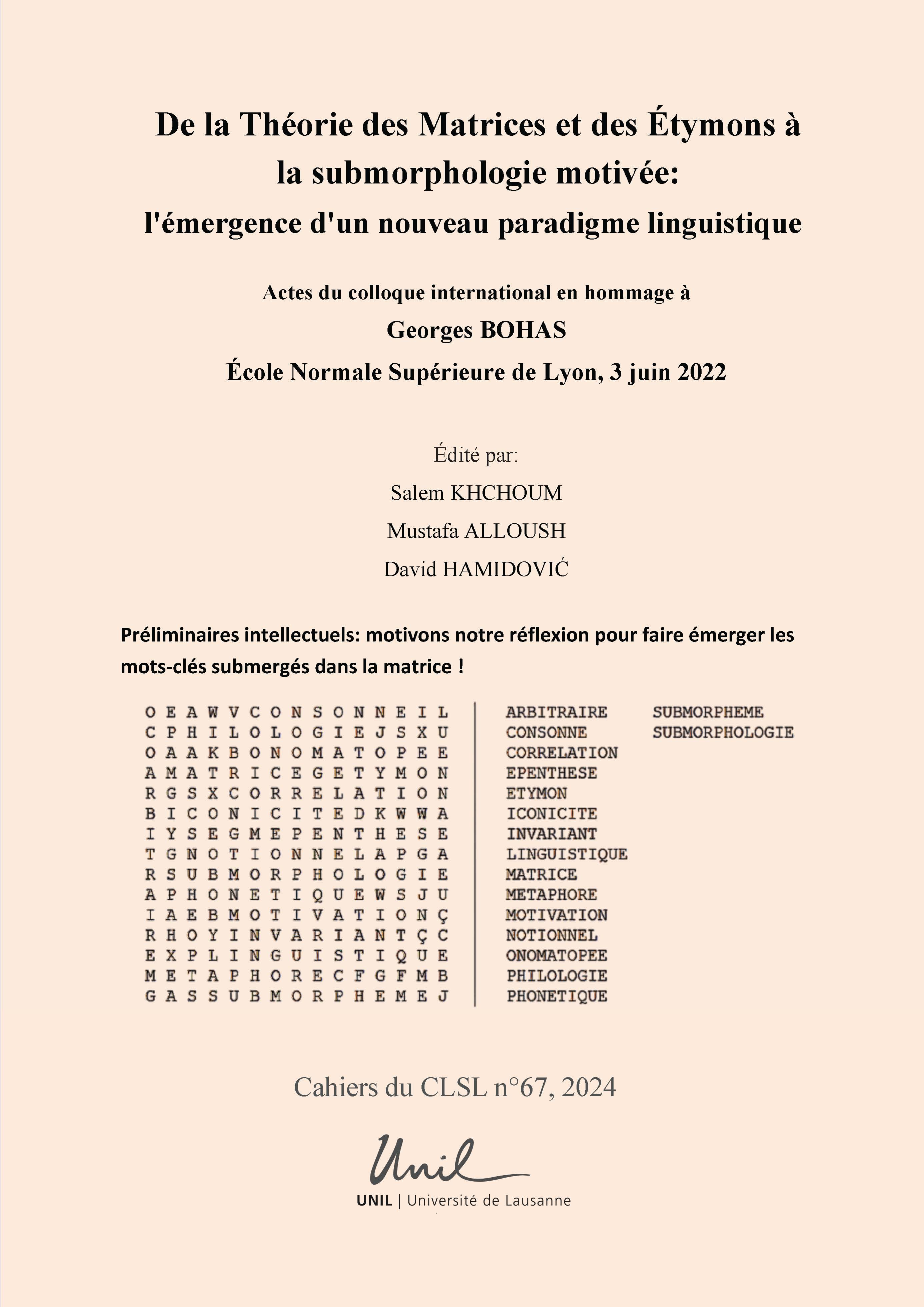Abstract
The Motivation of the linguistic sign is a saussurean notion that has been considered the main definitional characteristic of onomatopoeia. However, many research studies devoted to linguistic motivation have shown the pervasiveness of this phenomenon in the lexicon and in language in general, including phonemes, submorphemes, and even the discourse structure. How, then, could motivation on its own characterize onomatopoeia? We have drawn our attention to the distinction between ‘langue’ and ‘parole’. This article aims at showing that the main difference between onomatopoeias and other linguistics signs is the fact that onomatopoeias have different definitions en langue, en parole and, as we will see, en corpus. This article aims at displaying a theoretical framework in which this part of speech is described thanks to the langue/parole dichotomy.
